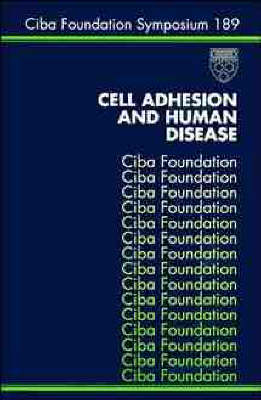
Cell Adhesion and Human Disease
John Wiley & Sons Ltd (Verlag)
978-0-471-95279-4 (ISBN)
- Titel ist leider vergriffen;
keine Neuauflage - Artikel merken
Cell adhesion is a rapidly developing area of cell biology. Over the last five to ten years it has become possible to work out, at a molecular level, how cells attach to each other and to extracellular matrix molecules. This book focuses on the range of human diseases caused by the defective or abnormal functioning of cell adhesion molecules. The opening chapters describe mice in which the genes for various adhesion molecules have been deleted, to provide clues as to when their absence may be harmful or beneficial. This will be important for future drug development. Cell adhesion plays a crucial role in the immune system and is an important factor in inflammatory diseases such as rheumatoid arthritis, asthma and psoriasis. The importance of cell adhesion molecules in the homing of lymphocytes to lymphoid organs, in neutrophil localization in inflammation, and in the interaction of both lymphocytes and neutrophils with vascular endothelium suggests that defects in these molecules might have severe consequences. Leukocyte adhesion deficiency, characterized by recurrent bacterial infection because of impaired neutrophil motility, is due to a defect in a ligand for selectin.
Other inherited diseases, such as von Willebrand's disease, result from mutation of genes encoding cell adhesion molecules. Epidermal blistering diseases are also the result of defects in adhesion of cells to neighbouring cells or to the extracellular matrix. The expression or absence of cell adhesion molecules has profound effects in tumorigenesis and metastasis. Tumours of certain tissues or organs give rise preferentially to secondary tumours in particular places, according to which molecules are expressed. Changes in the expression of specific adhesion molecules are associated with the acquisition of the metastatic phenotype. Elucidation of the molecular mechanisms underlying defective cell adhesion should provide the opportunity to develop new drugs for treatment of the resulting diseases. These would include conventional pharmacological agents, synthetic peptides and specific anti-adhesion molecule antibodies. The latter have been shown to be effective in preventing reperfusion injuries in animal models and have improved survival rates in colorectal cancer patients in a clinical trial.
P-selectin Knock out: a Mouse Model for Various Human Diseases; Creation and Characterization of Mice Deficient in E-selectin and VCAM-1; Von Willebrand's Disease and the Mechanisms of Platelet Function; Leukocyte Adhesion Deficiency (LAD) II; Leukocyte and Endothelial Adhesion Molecules in Ischaemia/Reperfusion Injuries; the Integrin VLA-4 as a Therapeutic Target; Adhesion Molecules in Cutaneous Inflammation; Defective Cell Adhesion in the Epidermis; E-cadherin as an Invasion Suppressor; the Role of CD44 Splice Variants in Human Metastic Cancer; Early Metastic Cells in Human Tumours: Phenotypic Characteristics and Their Use as Targets for Immunotherapy; Mechanisms of VCAM-1 and Fibronectin Binding to Integrin: Implications for Integrin Function and Rational Drug Design; Treatment of Inflammatory Diseases with a Monoclonal Antibody to Intercellular Adhesion Molecule-1; Identification of Endogenous Protein-associated Carbohydrate Ligands for E-selectin.
| Erscheint lt. Verlag | 20.2.1995 |
|---|---|
| Reihe/Serie | Ciba Foundation Symposium ; No. 189 |
| Verlagsort | Chichester |
| Sprache | englisch |
| Maße | 155 x 235 mm |
| Gewicht | 510 g |
| Themenwelt | Studium ► 2. Studienabschnitt (Klinik) ► Pathologie |
| Naturwissenschaften ► Biologie ► Zellbiologie | |
| ISBN-10 | 0-471-95279-6 / 0471952796 |
| ISBN-13 | 978-0-471-95279-4 / 9780471952794 |
| Zustand | Neuware |
| Haben Sie eine Frage zum Produkt? |
aus dem Bereich


